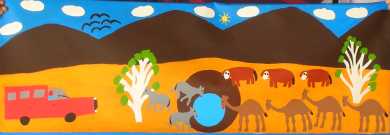One of my prized possessions after having lived in the UK for five years now is a “Pass Notification Letter” which I received on 30th October 2007 when I sat for the Life in the UK Test administered by the Border and Immigration Service of the Home Office. The letter states:
Following your test today in knowledge of life in the United Kingdom this is to certify that you have reached the level required for the purposes of obtaining indefinite leave to remain – Your success in this test also demonstrates that your level of competence in English meets the required standard for naturalisation or indefinite leave to remain. No further proof of this is needed.
I had to sit the test because my work permit ended on 10th November and I wanted to apply for “indefinite leave to remain”, ie. permanent residence (rather than apply for a further 5 year work permit extension). Since April this year everyone applying to stay in the UK or become a naturalised citizen has to sit and pass the test, or else take a certified ESOL course. The test is administered by computer and has 24 questions that must be answered within 45 minutes – a pass of at least 75% is required. I bought a Life in the UK Test Study Guide (which says on the cover it is “the essential study guide for British citizenship & settlement tests, over 100,000 copies sold”) for £7.99 and boned up on the five chapters (A Changing Society, UK Today: A Profile, How the United Kingdom is Governed, Everyday Needs, Employment) and took the 10 sample tests in the back. Feeling apprehensive but somewhat prepared I paid my £34 fee and joined 25 other hopeful applicants in the basement of my local registered test centre where we were shouted at by a Test Authoriser that we were “under examination conditions – if anyone looks at another person’s computer screen they will be removed from the test room, reported immediately to the Home Office for cheating which is sufficient grounds for deportation”. Thanks, just what we all needed. Anyway, I managed to answer enough questions correctly and passed.
So what does the test actually test?
 Follow
Follow